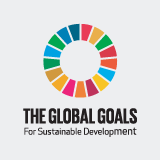Unsung Heroes of our Oceans
Seagrasses are marine flowering plants that are found in shallow waters in many parts of the world, from the tropics to the Arctic circle. Seagrass meadows are of fundamental importance to nature and people. They contribute to community well-being, whether through food security from fish production, improved quality of water filtered by seagrasses, protection of coasts from erosion, storms and floods, or carbon sequestration and storage. However, seagrasses have been declining globally since the 1930s, with the most recent census estimating that 7 per cent of this key marine habitat is being lost worldwide per year, which is equivalent to a football field of seagrass lost every 30 minutes. Seagrasses are among the least protected coastal ecosystems and often face cumulative pressures from coastal development, nutrient run-off and climate change.
This Story Map is just one effort to raise awareness of the importance of seagrasses to the environment and to people that rely on them. It complements the recently released Global Seagrass Report by the UN Environment Programme, called Out of the blue: the value of seagrasses to the environment and to people.
The message is clear. Healthy seagrasses provide a source of opportunities to mitigate climate change, adapt to future changes, build resilience and offer multiple additional societal benefits. We need to act now to protect seagrasses by prioritising timely, ambitious and coordinated actions in the areas of conservation, sustainable management and restoration.
Status: Completed
Type: StoryMaps
Author: Maria Potouroglou, Levi Westerveld, Georgios Fylakis
Year of publication: 2020
Publisher: GRID-Arendal
Place of publication: Arendal












